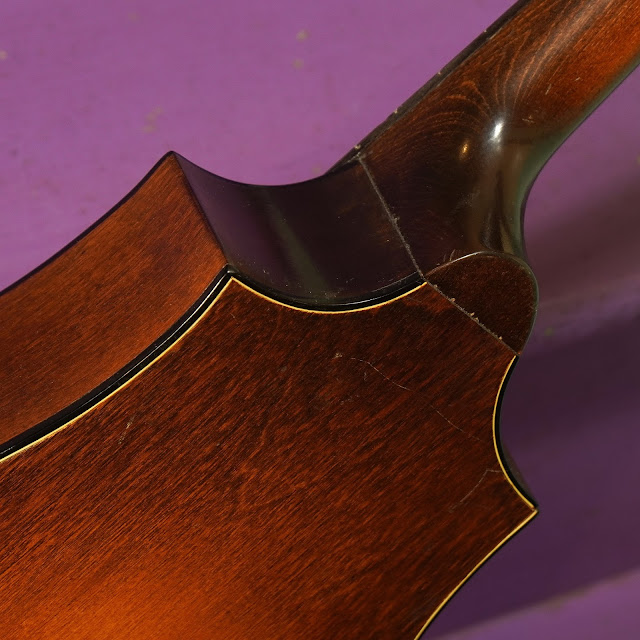1930s Regal Octofone
Update 2021: This was purchased from the owner by a different customer of mine and she brought it in to get more work done. I've updated the post with new photos, a video, and some updated information. Now back to the post...
While advertised as "eight instruments in one" when these were built, most folks these days use Regal's Ocotofone instruments as octave mandolins or "8 string tenor guitars" either tuned GDAE, CGDA or "Chicago" DGBE.
The catch, however, is that the unreinforced poplar necks need to be strung with the lightest functional gauges possible, and most Ocotofones have gone sour from too much tension over many years of folks trying to figure-out what to do with them. The neck joints are almost always pulled-up, too, because these use doweled joints and the bottom of the heel lifts as the glue ages-out.
I originally (in 2016) did "the minimum possible" on this instrument for its owner -- I glued and bolted the heel, leveled/dressed the frets, and set it up as well as I could. I used really light gauges for "Celtic" tuning, too. Still, despite that, that too-thin poplar neck warped under tension and by the time it came here again (2021), the action was higher than when it left.
Fortunately, the new owner didn't mind doing the upgrades I always think these things need, and post-repairs it's now a stable, happy, great-feeling, great-sounding instrument.
New repairs included pulling the fretboard, additional back-angle added to the neck joint, routing-for and installing a big piece of carbon-fiber neck reinforcement (a "non-adjustable" truss rod), a board plane and refret, and fitting of an adjustable, ebony, compensated bridge.
She strings it the way I like, too, with octaves on the lower courses. I've used gauges 16/40w, 12/30w, 16/16, 12/12 for GDAE tuning but it could go a gauge or two heavier on the lower courses and a gauge heavier on the A, too, but I wouldn't push the top much past that as that part of the instrument is still lightly-built.
What else to tell? It has a 21" scale length, solid spruce top over solid birch back and sides, a poplar neck, and ebonized-maple fretboard. Its original ebonized-maple/bone bridge is stowed in the case. The tuners on these turn backwards and are loosey-goosey but work alright for an on-again, off-again-use instrument. The nut is replaced.
Regal was also weird with the finishing and details -- the top is "natural" while the back and sides are sunburst. The top has 1-ply black binding while the back has 2-ply black/white binding. Curious...
Above is the new rod going in -- that's 1/4" x 3/8" and it's stiff as heck. When epoxied into that channel it adds a ton of strength and almost no weight gain. I ran the channel into the neckblock, too, to add some extra stiffness right into the block and joint.














Comments